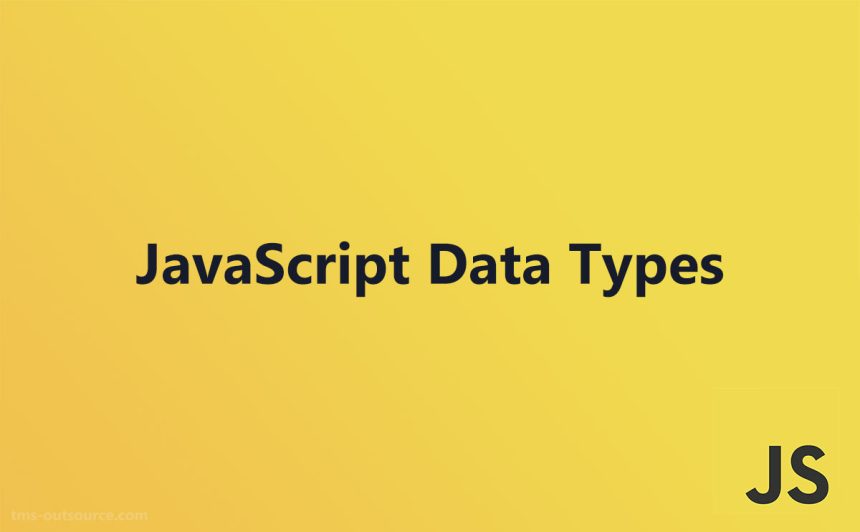
Introduction
In the realm of programming languages, the ability to work with data efficiently is paramount. JavaScript, a versatile scripting language executed by virtual machines within web browsers, relies heavily on the concept of data types. Understanding how data types function is akin to knowing the ingredients in a recipe – essential for producing a successful outcome from your source code.
Key Highlights
- Fundamental Concept: Data types define the kind of values you can work with in programming.
- JavaScript’s Flexibility: Dynamic typing in JavaScript offers flexibility but requires careful handling.
- Building Blocks: Primitive data types (like numbers, strings, and booleans) are the basic units of data.
- Complex Structures: Non-primitive data types (like arrays and objects) allow you to store collections of data.
- Error Prevention: Understanding data types helps prevent common coding errors.
- Essential for Web Development: Mastering data types is crucial for JavaScript’s role in front-end and back-end web development.
Understanding JavaScript and Its Importance
JavaScript is more than just a language; it’s the driving force behind interactive and dynamic web experiences. From animating elements to handling user input, JavaScript empowers developers to create engaging user interfaces and responsive web applications.
At its core, JavaScript’s ability to process information relies on its system of data types. These classifications determine how values are stored, accessed, and ultimately manipulated by the code you write.
What is JavaScript?
JavaScript, often abbreviated as JS, is a high-level, interpreted programming language that adheres to the ECMAScript specification. This dynamic language is a cornerstone of modern web development.
Unlike some languages that require compilation, JavaScript’s source code is executed directly by a browser’s JavaScript engine. This allows for real-time code interpretation and execution, making it ideal for creating interactive web pages.
In the ever-evolving landscape of computer science, JavaScript stands out for its versatility. It powers not only front-end development but also finds applications in back-end development, mobile app creation, and even game development.
Why JavaScript is Essential for Web Development
JavaScript is the powerhouse behind interactive web pages. It enables developers to go beyond static HTML and CSS to create dynamic content, handle user events, and make web pages truly come alive.
One of JavaScript’s strengths lies in its ability to work with different data types, which are crucial for managing the various kinds of information exchanged within a web page. From simple text strings to complex data structures, JavaScript provides the tools to handle it all.
Moreover, JavaScript’s role in memory management is simplified through its use of garbage collection. It automatically frees up memory occupied by objects that are no longer in use, reducing the burden on developers and improving performance.
Introduction to Data Types in JavaScript

In JavaScript, data types categorize values based on their characteristics and the operations that can be performed on them. These categories help the JavaScript engine understand how to store and process data effectively.
Think of data types as different containers for information. Just as you wouldn’t store flour in a milk carton, you wouldn’t treat a number in JavaScript the same way you’d treat text.
Overview of Data Types
JavaScript offers a variety of data types to work with different kinds of information. These types can be broadly categorized into two main groups: primitive and non-primitive.
Primitive types represent single, immutable values. They include types like:
- Number: Used for numeric values, including whole numbers, decimals, and exponents.
- String: Represents a sequence of characters, typically used for text.
- Boolean: Holds one of two values:
trueorfalse, often used for logical operations.
JavaScript is dynamically typed, meaning you don’t explicitly declare the type of a variable. The JavaScript engine determines the type at runtime based on the value assigned.
Static vs. Dynamic Typing in JavaScript
JavaScript employs dynamic typing, which sets it apart from statically-typed languages. Let’s understand the difference.
In statically-typed languages, you declare a variable’s type explicitly, and the compiler enforces it. Any attempt to assign a value of an incompatible type results in an error.
Dynamic typing in JavaScript, however, provides more flexibility. The type of a variable is determined during runtime based on the value assigned to it. This allows for variables to hold values of different types throughout their lifetime within a program.
The Basics of JavaScript Data Types

Data types in JavaScript form the foundation of how information is represented and manipulated. Whether you’re building a web application, working with data, or developing interactive games, a solid grasp of data types is essential.
Let’s break down the fundamental data types in JavaScript, starting with the building blocks known as primitive data types.
Primitive Data Types Explained
Primitive data types are the simplest data types in JavaScript. They represent single values and are immutable, meaning their values cannot be changed once created.
Here’s a closer look at the key primitive data types:
- Number: JavaScript uses a single number type to represent all numerical values, including whole numbers, decimals, and even very large or small numbers (using exponential notation).
- String: The string data type is used to represent textual data. Strings in JavaScript are enclosed within either single or double quotes.
- Boolean: This data type represents a logical value – either
trueorfalse. The boolean data type is fundamental for making decisions and controlling the flow of your program.
Non-Primitive Data Types Unveiled
Non-primitive data types, in contrast to their primitive counterparts, allow you to store complex data structures. They’re also referred to as reference types because they don’t hold the actual data but rather a reference (like a memory address) pointing to the data’s location in memory.
One of the most commonly used non-primitive data types is the Object. Objects in JavaScript allow you to group together data (in the form of key-value pairs) and functionality into meaningful units. For example, an object representing a “car” could have properties like “color,” “model,” and “year,” along with methods like “startEngine” and “applyBrakes.”
Another essential non-primitive data type is the Array. Arrays allow you to store an ordered collection of values, which can be of different types. You access individual array elements using their index, which starts from 0 for the first element.
Getting Started with JavaScript Data Types
Now that you have a basic understanding of what data types are and their significance in JavaScript, let’s take a practical approach to working with them.
Before you begin writing code that involves data types, it’s essential to set up a development environment that allows you to write, run, and test your JavaScript code.
Tools and Resources You Need
You don’t need elaborate setups to start coding in JavaScript. In fact, one of the beauties of this programming language is its accessibility. Here are the essentials:
- Text Editor: A simple text editor like Notepad, Sublime Text, or Visual Studio Code will suffice. You’ll use it to write your JavaScript source code.
- Web Browser: Your web browser (such as Chrome, Firefox, or Edge) acts as the interpreter, executing the JavaScript code you write. Modern browsers come equipped with powerful JavaScript engines (virtual machines) optimized for performance.
- Optional: Code Playground: For quick experimentation and learning, online code playgrounds like CodePen, JSFiddle, or Replit provide a convenient environment to write and test JavaScript snippets without the need for a local setup.
Setting Up Your Development Environment
For beginners, a straightforward setup involving a text editor and your web browser is ideal:
- Create a Project Folder: Organize your work by creating a dedicated folder for your JavaScript projects.
- Create an HTML File: Inside your project folder, create a new file (e.g.,
index.html). You’ll use this HTML file to embed your JavaScript code. - Link JavaScript: Within your HTML file’s
<head>section, add a<script>tag to link your external JavaScript file. For instance:
<script src="script.js"></script>
Replace script.js with the actual name of your JavaScript file.
Step-by-Step Guide to Mastering Data Types
Let’s walk through the steps of working with data types in JavaScript. We’ll start with the fundamentals and gradually build our understanding through examples.
Remember that practice is key. The more you experiment with data types, the more comfortable you’ll become with their nuances.
Step 1: Understanding Variables and Constants
In JavaScript, variables serve as containers to store data values. To declare a variable, you use the let keyword followed by the variable’s name:
let age = 25;
let message = "Hello World!";
let isLoggedIn = false;
Here, we’ve declared three variables (age, message, and isLoggedIn) and assigned them values of different data types (number, string, and boolean).
Constants, on the other hand, hold values that are not intended to change during the execution of your program. You declare constants using the const keyword:
const PI = 3.14159;
Step 2: Working with Strings and Numbers
Strings and numbers are among the most frequently used data types.
Strings represent textual data. They are enclosed in either single (‘) or double (“) quotes:
let name = "Alice";
let greeting = "Hello, " + name + "!";
Numbers represent both whole and decimal numbers. You can perform arithmetic operations on numbers:
let price = 29.99;
let quantity = 3;
let total = price * quantity;
JavaScript automatically handles type coercion in certain situations. However, it’s generally good practice to be aware of potential type-related issues.
Step 3: Exploring Boolean, Null, and Undefined
The Boolean type has two values, true or false, representing truthiness or falsiness, respectively. They are crucial for conditional statements and logical operations:
let isAdult = true;
let hasPermission = false;
if (isAdult) {
// Code to execute if isAdult is true
}
Null is a special value that represents the intentional absence of a value.
Undefined indicates that a variable has been declared but has not been assigned any value.
Understanding the distinctions between these special values is crucial for debugging JavaScript code.
Step 4: Manipulating Objects and Arrays
Objects allow you to group related data and functionality:
let user = {
firstName: "Bob",
lastName: "Johnson",
age: 30
};
console.log(user.firstName); // Accessing the "firstName" property
Arrays store an ordered collection of items, which can be of different data types:
let colors = ["red", "green", "blue"];
console.log(colors[0]); // Accessing the first array element ("red")
Here’s a simple table summarizing how to work with objects and arrays:
| Action | Objects | Arrays |
| Creation | let objectName = {} | let arrayName = [] |
| Adding | objectName.newProperty = "value"; | arrayName.push("new element"); |
| Accessing | objectName.propertyName | arrayName[index] |
Common Mistakes and How to Avoid Them

Even seasoned developers make mistakes, and data type-related errors are common. Understanding common pitfalls can save you time and frustration during debugging.
Let’s examine some frequent errors that can trip up beginners and learn how to steer clear of them.
Mixing Up Data Types
JavaScript’s flexibility in handling different data types, while advantageous, can sometimes lead to unexpected results if you’re not careful.
One common mistake is attempting to perform operations that are incompatible with certain data types. For instance, trying to multiply a string with a number without proper conversion.
let quantity = "5";
let price = 10;
let total = quantity * price; // Unexpected result!
In this case, quantity is a string. Multiplying it directly with price would treat the multiplication as string concatenation, resulting in “50” instead of the intended 50 (as a number).
Always be mindful of the data types you’re working with and employ explicit type conversion when necessary.
Misusing Null and Undefined
The special values null and undefined often cause confusion for beginners, and misusing them can lead to subtle bugs.
For instance, attempting to access a property of a variable that holds null or undefined will result in a TypeError.
let userProfile = null;
console.log(userProfile.name); // Throws a TypeError
It’s crucial to handle situations where values might be null or undefined using conditional statements or optional chaining:
if (userProfile !== null) {
console.log(userProfile.name); // Access property only if userProfile is not null
}
console.log(userProfile?.name); // Optional chaining - accesses name only if userProfile is not null or undefined
Conclusion
In conclusion, mastering data types in JavaScript is a fundamental step in becoming proficient in web development. Understanding the differences between primitive and non-primitive data types, along with static and dynamic typing, is crucial. By following a structured approach to learning variables, constants, strings, numbers, boolean values, null, undefined, objects, and arrays, you can enhance your coding skills. Avoid common mistakes like mixing up data types and misusing null and undefined to ensure cleaner and efficient code. With dedication and practice, you can confidently navigate JavaScript data types and elevate your programming expertise.
Remember, practice makes perfect!



